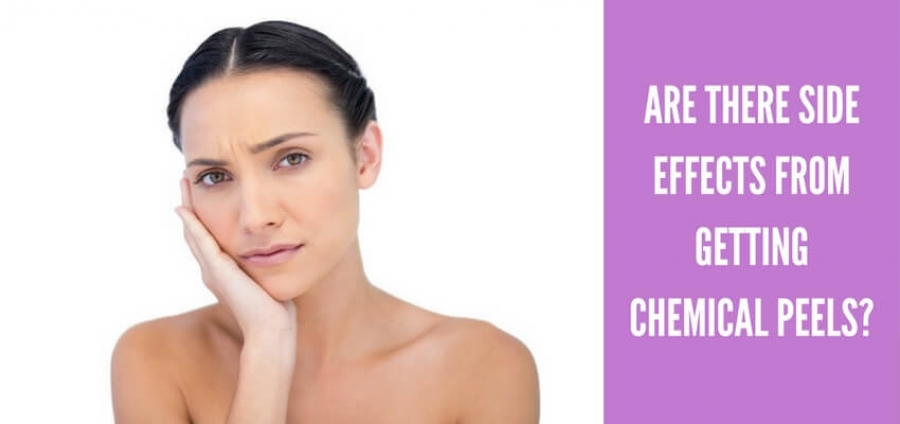For example, if you have recently developed age spots or sun damage that has resulted in an uneven complexion, professional cosmetic procedures can restore your skin's tone and texture.
Chemical peels are just one of the many procedures that can help your skin look better, using chemicals to reveal new skin on your face, chest, neck, and hands. Read on to find out what kind of chemical peels are available to you and what side effects you may experience after undergoing the procedure.
Types of Chemical Peels
Chemical peels are offered in different levels of strength that can address minor to significant skin problems.
The Lunchtime Peel
Also called the superficial peel, this procedure only targets the outer layer of your skin. As the name indicates, this is something you can actually do during a lunch break and get back to normal life quickly with minimal side effects. It is best used to treat minor skin problems, such as slight discoloration and uneven texture. Your dermatologist will use a mild acid like alpha-hydroxy with this type of peel.
The Medium Peel
For this treatment, your aesthetician will apply more powerful acids like glycolic or trichloroacetic acids which will go deeper into your skin than a lunchtime peel. This procedure penetrates to the middle layers of your skin, removing damaged cells buried in there. This type of peel can reduce the appearance of fine lines, wrinkles, freckles, age spots, and discoloration that are more pronounced than what a lunchtime peel can treat. It can also save lives by removing precancerous skin growths!
The Deep Peel
This type of treatment is done by applying the strongest acids possible to your face, which are trichloroacetic acid or phenol. Since this peel penetrates your skin deeper, your skin will experience the most dramatic changes compared to the other two options. This peel is effective in addressing more established age spots, moderate lines, dark freckles, and stubborn scars. Because this procedure is more intense, it is restricted to the face and can only be performed once.
How do I know if a chemical peel is right for me?
Your dermatologist or aesthetician will be able to determine whether you can get this treatment after a thorough consultation. They will assess your skin and see which procedure it needs or if other less-invasive treatments can deliver the results you need.
To be fit for a chemical peel, you should be free of any skin disease or topical infections. There are other conditions that must be met that your aesthetician can advise you on during your consultation. So be prepared to give accurate information about prescription medications you take and your history of health conditions.
Another factor to consider is skin tone. In general, patients with fairer complexions reported that they see more positive and satisfying results. On the other hand, these peels, especially the Medium or Deep Peels, are typically not appropriate for people with darker skin tones. This is due to the risk of irregular pigmentation following the procedure.
What are the side effects of chemical peels?
All chemical peels can sting and that is normal. The level of pain you experience depends on the strength of peel you undergo. The lunchtime peel is typically the least painful because it uses alpha-hydroxy, lactic, fruit, or glycolic acids which are known to be gentle on the skin.
In spite of that, keep in mind that the lunchtime peel can still result in redness and a stinging sensation after the treatment. In some cases, your skin may feel irritated or crust during healing. But after a few days, these side-effects will subside.
Using medium peels that employ trichloroacetic acids will result in more intense versions of the side effects you would experience from a lunchtime peel. Depending on your skin sensitivity, temporary swelling may also occur for 48 hours. Sometimes your eyelids may become swollen shut or you may experience blisters. You can expect your skin to crust and peel off during the healing process.
Since it uses the strongest acids, deep peels have the most intense side effects. It is normal that your treated skin will be wrapped in bandages and you will need to undergo a strict recovery regimen that involves soaking your skin and using prescribed creams. This procedure has the longest recovery time but produces the most dramatic results.
Are there other side effects that I should be aware of?
There are some side effects that occasionally happen to patients who undergo this procedure. Which is why it is important to have a thorough consultation before proceeding with your treatment. Among these occasional side effects are:
- Scarring
- Cold sore reactivation
- A change in skin color- either temporary or permanent
- Infection
- Damage to Heart, Liver, or Kidney
To reduce the chance of negative side effects, take care of yourself and be gentle with your skin for the prescribed recovery time for your peel. You should apply all the recommended recovery creams and lotions as well as apply sunscreen daily.
Overall, lunchtime peels require a week for healing, while medium peels need two weeks. Deep peels could require two to three weeks for complete healing, therefore we recommend that you avoid direct sunlight for up to 6 months and always protect your skin with a high SPF sunscreen for optimal results.



